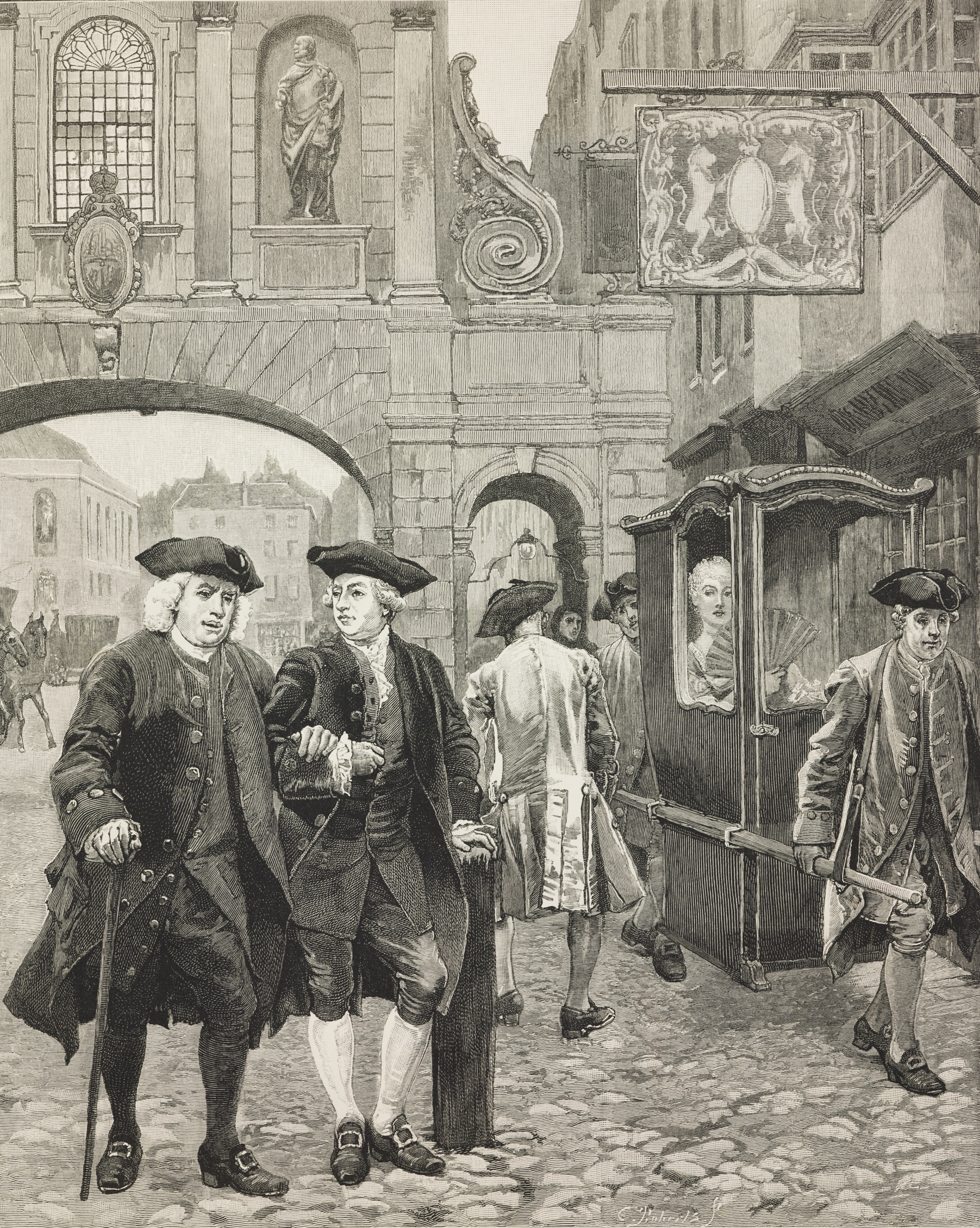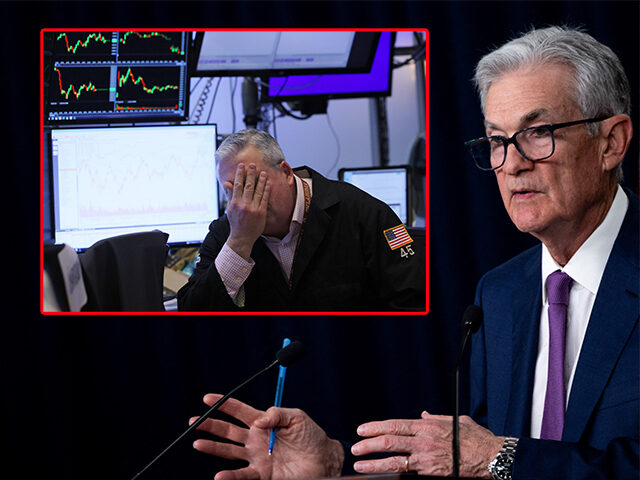The Bond Market Is Like a Dog Walking on Two Legs
We have it on the authority of James Boswell that in the summer of 1763 Samuel Johnson said that “a woman’s preaching is like a dog’s walking on his hind legs. It is not done well; but you are surprised to find it done at all.”
That is the sort thing that will get you thrown in disinformation jail these days. Some writers have found the actual phrasing so disquieting that they have resorted to misquoting the line when the underlying sentiment was useful.

Dr. Samuel Johnson (1709-1784) and James Boswell (1740-1795) are depicted in Fleet Street, London, in an engraving from a drawing by Charles Green (1840-1898). (Getty Images)
“To paraphrase Samuel Johnson, it was not that the dog did not play the fiddle well, but that he played it at all,” foreign policy expert Barry Rubin once wrote in a New York Times op-ed.
This, in turn, prompted a New Yorker by the name of Leon Aron to write a letter objecting:
Samuel Johnson, “paraphrased” or not, never said anything about a dog playing the fiddle. As recorded by Boswell on July 31, 1763, Johnson said, “Sir, a woman’s preaching is like a dog’s walking on his hinder legs. It’s not done well; but you are surprised to find it done at all.”
While the old wit may be forgiven for male chauvinism, pandemic in his times, it is disconcerting to find a member of the American intellectual elite misquoting the great sage, especially in the bicentennial year of his death.
Johnson died in 1784. Rubin’s op-ed was published in December of 1984, and Aron’s letter made it to print in the early days of the new year.
The Third Time Is a Charm
The Johnson observation was brought to mind by the market’s apparent reaction to Federal Reserve chairman Jerome Powell’s interview with the CBS program 60 Minutes.
“Hopes for a March interest rate cut keep fading,” the Wall Street Journal reported on Monday in reaction to a steep drop in stock and bond prices that took 300 points off the Dow Jones Industrial Average and sent the 10-year Treasury yield to nearly 4.18 percent.
What was surprising was not so much that the market was shaking off the hope that the Fed would cut in March but that such hopes existed at all.
The economic data made it clear enough weeks ago that the Fed would not be in a position to cut interest rates at the March meeting. The December jobs numbers and retail sales figures surprised to the upside. Inflation crept up a bit. Consumer sentiment was blossoming. There were no signs that the economy was softening, much less that it was so imperiled that the Fed would need to start putting forward pressure on interest rates.
Yet market prices implied that investors were convinced the Fed would cut in March and would cut five or six more times this year.
The statement of the Federal Reserve’s monetary policy committee on Wednesday should have been enough to snuff out the hopes for a March cut.
“The Committee does not expect it will be appropriate to reduce the target range until it has gained greater confidence that inflation is moving sustainably toward 2 percent,” the Federal Open Market Committee said.
The March cut conviction was so strong, however, that even this barely budged the odds implied by fed funds futures. Many Fed watchers insisted on the most dovish interpretation of the statement possible, arguing that the most important thing was that it confirmed the dovish pivot the Fed appeared to make in December.
Powell had to get even more explicit during his press conference.
“Based on the meeting today, I would tell you that I don’t think it is likely that the committee will reach a level of confidence by the time of the March meeting to identify March as the time to do that,” Powell said.
That should have been that. Was it possible the Fed would cut in March? Only in the same way it is possible that the Super Bowl will be canceled because of extreme heat. You could probably dream up a scenario where it could happen, but it wouldn’t be something you would want to actually worry about.
Then, on Friday, we got the January jobs numbers. Instead of reporting the expected decline to 185,000 and revising down the 216,000 initially reported for December, the Department of Labor said the economy added 353,000 jobs in the first month of 2024 and raised the December estimate to 333,000. Why would the Fed cut into a rapidly tightening labor market?
Yet by Friday afternoon, there were still those clinging to the hopes that maybe the Fed would cut rates in March or at least would definitely cut in May.
There was nothing particularly new in Powell’s remarks to 60 Minutes. The chairman stuck to the script very well, repeating his points that the Fed planned to cut rates this year but could afford to be patient about the timing because the economy was doing quite well.
Powell did not even sound very worried about inflation, emphasizing that he views inflation as likely to keep falling or perhaps becoming stuck. The possibility of resurgent inflation barely even registered.
Perhaps it was just a case of “the third time’s a charm.” On Monday, the market actually seemed to be convinced that Powell really meant it. The odds of a March cut dropped below 20 percent, and the odds of a May cut fell to 63 percent.
Those are still a bit unrealistic. The March cut odds should be effectively zero, and the May cut should not be the odds-on favorite.
Still, it was slightly reassuring to see the market finally take notice that Powell and the Fed really, really do mean they are not planning to cut rates a month from now.

COMMENTS
Please let us know if you're having issues with commenting.